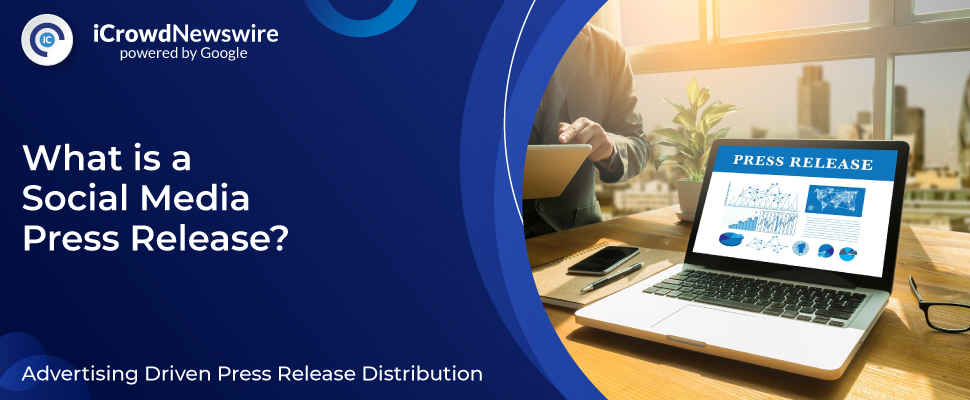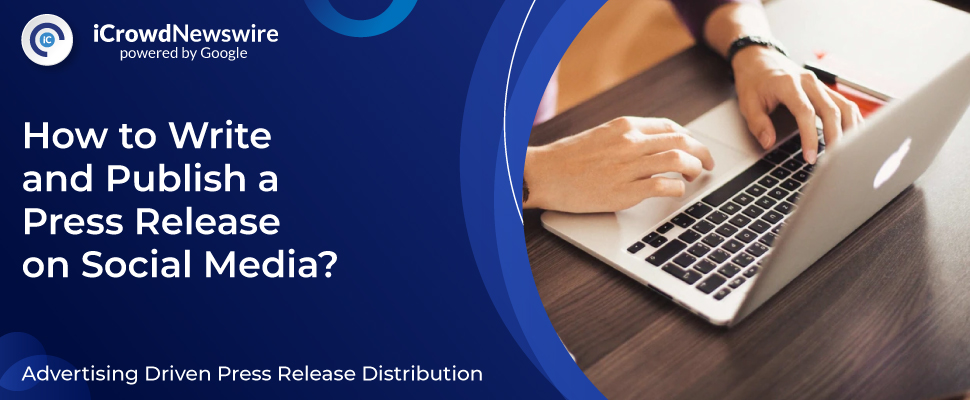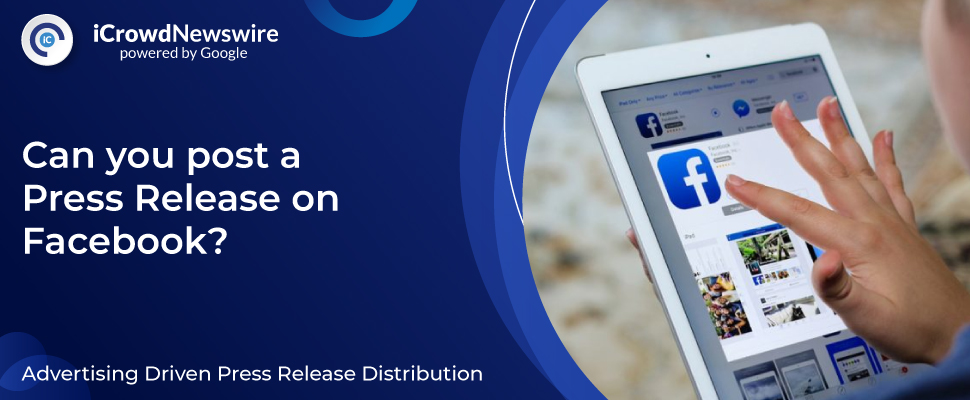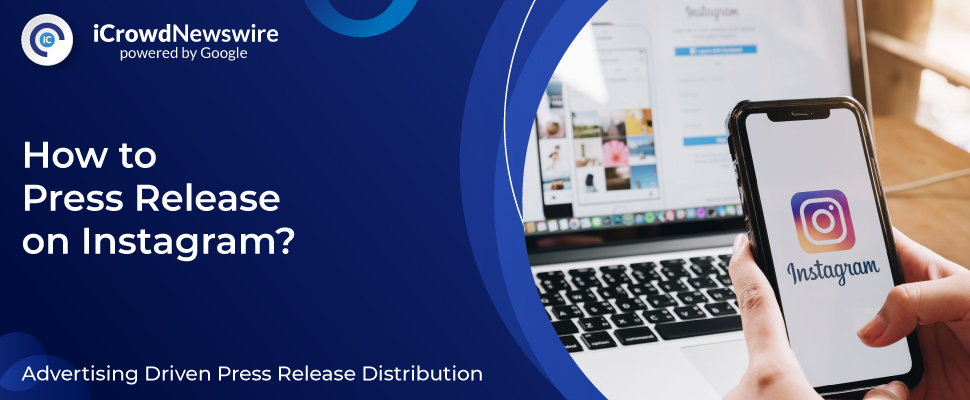What is a Social Media Press Release, and Why Should you Use It?
Todd Defren of Shift Communications first conceived the social media press release in 2006 as an evolved type of press release template aimed directly at social media marketing. He originally created the social media release as a response to Tom Foremski’s public call for the death of press releases, called “Die! Press release! Die! Die! Die!”
The conception revolutionized press release marketing by becoming, in the words of Todd Defren, “a simple way to both Webify the content that you put in a news release, and also, ideally to socialize it. So it’s about adding multimedia, making sure these things are more findable than they’ve ever been before in the age of Google, but also giving some community and context aspects to it as well.”
This article explores what a social media press release is, how to write and publish it, and why you should use it.
What is a Social Media Press Release?

The traditional media or news/press release has dominated the distribution sector for nearly a hundred years. The pioneering of the social media press release considerably improved the template of the traditional press release and broadened the reach to desired audiences.
Overall, the social media release is not a dramatic change to the traditional media release, but it was considered so at the time of its conception. The change was specifically aimed at catering for mobiles and social media, and either of the two had yet to catch on. Thankfully to advancements in technology, it’s become much easier to incorporate the various aspects of a social media press release in a traditional press release.
The social media press release aims to complement — not replace — the traditional press release but differs from it by three primary characteristics:
- Audience:
Social media releases are published for customers and the general public rather than to journalists and media outlets. Since the information on the press release is to be distributed online and shared on social media platforms, its primary aim is to reach customers directly instead of using the media as an intermediary.
- Style:
When writing a traditional press release, one generally writes in a formal tone. However, the writing style of a social media release resembles that of an article.
Since regular releases are for journalists to read and form stories out of, the writing style aims to quickly convey factual information in a concise and somewhat dry manner. The journalists find their take on the news article they want to write, extracting the data supporting their views from the press release.
Since social media press releases target readers directly, one has to find their own angle on the story they want to write the social media press release about. Additionally, the writing style has to be general and persuasive enough for viewers to take an interest in it. Once a social press release catches the readers’ attention, they have a chance of fulfilling the primary goal of a social release, which is to share it on social media platforms.
- Technology:
To have graphics and audio attached to the press release and still be accessible on different devices and shareable on social media, social media press releases need to be published using the right tools. It is best, in this case, to use a distribution service that integrates the appropriate social sharing tools and graphics into the publication, thus ensuring that the content is eye-catching and shareable.Another factor to consider is that social media press releases contain multiple prompts for sharing, i.e., the press release can encourage you to create a suggested tweet or share the press release on Facebook with your views about it.
One of the critical features of a social media press release is its accessibility from multiple devices; instead of being posted as a Word or PDF document attached to a webpage, email, etc., these press releases are published directly on webpages. While posting the press release online, it is essential to ensure that the press release layout is adaptable to the devices receiving it. Suppose a person accesses the press release through their PC and another person opens it through their Android phone, the layout of the press release will ideally change to adapt to either device.
The primary advantage of posting a press release online is that people can search for that particular press release through its keywords — search engine optimization (SEO) plays a vital role here — and share it on social media — social media optimization (SMO) is what drives social media shares.
What are social media press releases used for? Generally, these press releases contain stories aimed at increasing brand awareness and targeted directly at their potential and existing customers. These stories can include:
- The launch of a new product or marketing campaign,
- The results of a market study,
- The results of a revolutionary industry study,
- The launch of a new company, etc.
How to Write and Publish a Press Release on Social Media?

Suppose you have decided that you want to write a press release incorporating social media and have experience in writing traditional press releases. In that case, the good news is that the essential elements of either template are the same. Although the placements of these elements vary depending on the PR professional writing them, the fundamental need for these elements to be included remains. Below is a sample press release by iCrowdNewswire:
When writing a social media press release, below are the elements you should include:
- Title:
The headline, or title, aims to immediately catch the attention of your readers. Therefore, the title has to be concise and should include your main keywords. Being too creative or vague might lead your press release to be overlooked, so it’s best to capture the essence of your press release in the title.
- Category and Dateline:
Although the former is not as common as the other elements mentioned in this list, mentioning the category of your press release will help you highlight what your niche is. Doing so will help you target your desired audience according to their demographic characteristics.
Similarly, including a dateline means writing the location, date, and time of your press release. The dateline is generally written after the title and before the body text of the publication. The dateline caters to two needs:
- Mentioning the location helps you pinpoint the region which is most likely to take an interest in your press release. Geographic targeting includes other marketing tactics as well, though, and leading press release distribution services offer you to target your desired audience down to zip codes.
- Mentioning the date of your press release helps highlight its relevance; readers are most likely to take an interest in and interact with the latest stories.
- Company Logo:
First impressions matter, and that’s exactly why you should add your company logo. This will help your readers familiarize themselves with your company. Suppose a customer has seen your logo somewhere but doesn’t know the name of your company. Upon seeing your company logo, the customer will click on your social media press release without hesitation. Similarly, a new customer will form a better impression of your company with a creative logo.
- Multimedia Attachments:
These are the primary feature of a social media press release template that differentiates the template from regular press releases. With the technological advancements of recent years at your aide, you have various tools at your disposal.
Attaching images and infographics can help you summarize your content with simple but informative visuals. Readers are most likely to read image attachments long before they consider reading the content of your press release. It’s best to ensure that any creatives you attach in the press release contain valuable information that is readable and interesting.
Video attachments help readers hoping to look into your company form a better impression of it. It’s best to keep videos short, creative, and to the point, since readers (viewers in this case) are most likely only to watch a video attachment for a minute at max. A helpful tip is to attach gifs if you are willing to sacrifice on the audio.
Some press release distribution technologies allow you to attach audio files. While this is not as beneficial as attaching videos, it still plays a role in marketing your brand. With that said, a few press release distribution services offer Virtual Digital Assistant (VDA) integration which allows audiences to listen to your press release in audio format. Now, that’s a top-notch marketing strategy.
- Main Content:
This is the main story of your press release. As mentioned before, the writing style of press releases for social media differs from that of a traditional press release. In a social media press release, it’s best to focus on the facts and lay them out in a way that captures readers’ attention. Think about why your brand or new product is important. Evaluate the importance of the results of your industry study and who they impact. With these considerations in mind, start writing the content of your press release as if you’re directly writing to your customer.
- Boilerplate:
This is a brief company bio that is usually repeatedly used on multiple press releases. A good practice is to write a general boilerplate and cover the primary aspects of your company. Trust me; it’s easier to copy-paste it that way.
Another practice is adding a link to your website, your Facebook page, Twitter feed, and Instagram handle at the end of your boilerplate, but that can also be added above your contact information.
- Contact Information:
Don’t forget to add a point of contact to your company; it’s a good idea to mention a name, email, and phone number so any interested readers can contact your company.
Can you Post a Press Release on Facebook?

Yes, it’s a good practice to share your press release on Facebook since it reaches your customers directly. This practice will help you gain traction amongst your competitors and build your brand image.
To post a press release on Facebook, share a link to the press release and extract a sentence or two from the press release content to write as the Facebook post’s caption. A good idea while writing the caption is to choose a few sentences from the first paragraph, but it varies from press release to press release. Whatever happens, do not make the mistake of copy-pasting the entire content from the press release to a Facebook post; it’s unlikely that Facebook users will read that.
How to Post a Press Release on Instagram?

Similarly to Facebook, you can also share your press release on Instagram. The difference, though, is that since Instagram is a platform more orientated towards images and video sharing, you should focus more on visuals. You could even set up an Instagram grid (square, puzzle or custom) to showcase the press release. Social media press releases naturally include more multimedia attachments than traditional press releases, and you can use this to your advantage.
Choose either a short video or an image from your press release for the post on Instagram. It’s also possible that you can post a picture of your press release itself, but I’d advise against that; it’s much better to just write the headline of the press release in an eye-catching ad creative instead.
Why you should use Social Media Platforms for your Press Releases?

With 53.6% of the world’s population using social media, the question should be: why not? The average user uses social media platforms for 2 hours and 25 minutes daily, with Facebook and Instagram being in the top five most used social media platforms. With these statistics, social media proves itself to be a valuable tool for your marketing efforts.
The story of Blendtec’s success proves the value of social media. The company’s marketing director, Jeff Robe, started a video series on Youtube called Will It Blend for Blendtec’s new product, the Total Blender for home use. In each video, the company’s founder, Tom Dickson, would put different items (from iPhones to toilet plungers) into the blender to see if they would blend. As a result of this creative video series, the company’s home sales of blenders increased by 700% between November 2006 and August 2010.
Conclusion
Social media is the marketing tool for the ages, and incorporating your press release into social media has the potential to do wonders for your business. If you were considering publishing a social media press release, today is the day to get started!




